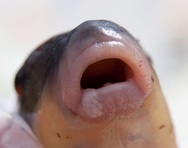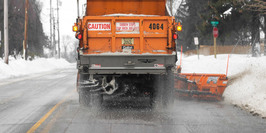
The Lessard-Sams Outdoor Heritage
Council finalized its funding recommendations Sept. 27, advancing 38
proposals totaling nearly $118.4 million to the 2019 Legislature for final
decisions. The council initially received 45 proposals totaling $264 million.
It rejected funding for some proposals and recommended partial funding for
others. The council’s recommended funding ranges from $737,000 to the Stearns
Soil and Water Conservation District for a dam fish passage on the Sauk River
to $9.98 million to continue the Minnesota Dept. of Natural Resources’
Conservation Grants Legacy Program.
The council makes annual recommendations to
the Minnesota Legislature on appropriations from the Outdoor Heritage Council,
which is funded by the Clean Water, Land and Legacy Amendment.
|

The Minnesota
Dept. of Natural Resources’ Conservation Partners Legacy grant program is now
accepting applications for the second round of Expedited
Conservation Projects grants. The DNR recently awarded grants for the first
round of Expedited Conservation Projects grants, with more than $900,000 going
to 24 projects and $2 million remaining for future grant rounds.
This program funds
eligible
activities that restore or enhance forests, wetlands, prairies, or habitat
for fish, game, and wildlife on public lands and waters in Minnesota. Grant
requests may range from $5,000 to $50,000, with a maximum total project cost of
$575,000. Nonprofit organizations and government entities are eligible to
apply, and a 10% match of non-state funds is required. Apply online
by 4 p.m. on Nov. 19. Funding for this program comes from the Outdoor Heritage
Fund. Questions? Please email lscplgrants.dnr@state.mn.us
for more information.
|

The U.S. Environmental Protection Agency (EPA) recently
approved the Total
Maximum Daily Load report for the Lake Superior-North watershed and Flute
Reed River. Nearly all lakes and streams evaluated in the Lake
Superior-North watershed meet water quality standards, according to Minnesota Pollution Control Agency (MPCA)
studies. The MPCA studied 67 streams and 152 lakes in this northeast corner of
the state, and only one stream – the Flute Reed River – failed to support
standards.
The Flute Reed River’s sediment levels are higher than
allowed under state standards and are impacting clear water and clean gravel
stream habitat for trout. The sediment impairs the trout’s ability to capture
food and lay eggs, potentially leading to a population decline. For humans, too
much sediment reduces the enjoyment for swimming and other aquatic recreation.
The related Lake Superior-North
Watershed Restoration and Protection Strategies (WRAPs), approved by the
MPCA in August 2018, outlines several strategies to protect the excellent water
quality in this watershed.
|

Recent research in the St. Louis
River estuary shows that white sucker fish have a low rate of fish tumors and
deformities. Previous observations led authorities to believe the fish were at
risk, and to consider the estuary “impaired.” (A body of water is considered
“impaired” if it fails to meet one or more water quality standards.) However,
in response to the recent research, the Wisconsin Department of Natural
Resources (WDNR) and MPCA are requesting
that the St. Louis River no longer be listed as impaired for fish tumors and
deformities.
Fish sampled in 2011, 2013, and 2015
were studied to determine if fish tumors and deformities were more common in
the St. Louis River Area of Concern (AOC) than elsewhere. The St. Louis River AOC is
one of 43 such areas designated by the EPA in 1987 as the most highly
contaminated in the Great Lakes. The research showed that the occurrence of
tumors in white sucker fish was not significantly different between the river
and Lake Superior, and lower than in other sites in the Great Lakes. The age
and gender of the fish were found to be more important factors for fish tumor
development.
Because of these findings, the MPCA
and the WDNR proposed that the fish tumors and deformities impairment be
removed for the St. Louis River AOC. The removal proposal and study are
available on the WDNR website for review. See a fact sheet at: http://dnr.wi.gov/topic/greatlakes/st.louis.html.
The comment period on the impairment
removal recently closed. The MPCA and WDNR will now review those comments and
submit a final removal recommendation to the U.S. EPA. General questions about
the removal proposal can be directed to Matt Steiger, Wisconsin DNR, AOC
Coordinator at 715-395-6904, or Barb Huberty, MPCA AOC Coordinator, at
218-302-6630 or by email at barbara.huberty@state.mn.us.
The St. Louis River AOC will have
seven remaining impairments to address before the entire St Louis River AOC can
be delisted. Some species of fish in the river still contain high levels of
pollutants such as mercury and polychlorinated biphenyls or PCBs.
This work was included in the St.
Louis River AOC Remedial Action Plan and funded primarily by the federal Great
Lakes Restoration Initiative. The primary partners involved in this work
included the U.S. EPA, WDNR, Minnesota DNR, MPCA, and the Fond du Lac band of
Lake Superior Chippewa.
Photo above: Arrow points to a lip
lesion on a white sucker caught in the St. Louis River Area of Concern.
|
An Administrative Law Judge has
approved a majority of the proposed Groundwater
Protection Rule: Report on the Groundwater Protection Rule from
the Administrative Law Judge. This
report approves the primary provisions of the proposed Groundwater Protection Rule. The purpose of the rule is to
minimize potential fertilizer sources of nitrate pollution to the state’s
groundwater and protect drinking water. Nitrogen fertilizer would be restricted
at certain times in some areas with mitigation practices in others. The Dept.
of Agriculture will review the recent ruling and consider the appropriate
changes as recommended by the judge.
A comment period was open from April 30 to Aug. 22, 2018. The comment
period was conducted by an administrative law judge and all comments were
submitted to the Office of Administrative Hearings (OAH). During this time five
public hearings were held around the state. More than 3,000 comments were
submitted during the comment period. There were 92 written comments, 40 people
testified at five rule hearings and more than 2,900 form letters submitted to the
office. There were an additional six comments submitted during the rebuttal
period.
Comments submitted during the comment period can be viewed
on OAH's
rulemaking website. Comments
submitted during the rebuttal period can also be viewed on the OAH's rulemaking website.

Have you considered what happens to the tons of salt
that are spread on roads, parking lots, and sidewalks each winter? Most of it
ends up in lakes, streams, wetlands, and groundwater. It only takes 1 teaspoon
of salt to permanently pollute 5 gallons of water. Minnesota’s fresh water
lakes and rivers are getting saltier and saltier, which harms the fish, bugs,
and other organisms living in them.
The MPCA's Smart Salting trainings will teach public and
private maintenance crews how to effectively keep roads, parking lots, and sidewalks
safe while protecting Minnesota’s iconic lakes and rivers. The training can
also save money: Many previous participants have reduced their salt use by
30 - 70%!
Private snow
removal businesses can also let their clients know they’re protecting the
environment with the voluntary Smart Salting certification, being listed as
certified on the MPCA website.
The agency offers a Level 1
(individual) and Level 2 (organizational) Smart Salting certification for both
private and public sector participants. Level 1 includes a roads class and a
parking lots/sidewalks class. The Level 2 certification features an assessment
tool which aids in budget planning and communicating with public officials or
others who provide funding for maintenance work.
Level 1
Training topics:
- How you can make changes to protect our water
- The effect of salt on our lakes, rivers and groundwater
-
How de-icers, abrasives, pre-wetting, and anti-icing work
- Selection of the best product for the conditions
- Equipment calibration
- Application rates
- New maintenance methods
- Cost savings tips
Level 2 Training
topics:
- Overview of the Impact salt has on our water resources
- Steps to become Level 2 certified for your organization
- Introduction to the Smart Salting Assessment tool (SSAt)
- Explore SSAt with guided instruction on a computer provided in the lab
- How to utilize the SSAt reports
Visit the MPCA’s Smart Salting
training webpage for more information an upcoming trainings, the next one
being Oct. 22 in Prior Lake.
|
More than 200 volunteers picked up more than 8,000 pounds of
litter, including tires, tarps, sign posts, and appliances at the 10th Annual
Cannon River Watershed-Wide CleanUp on Sept. 15 in Owatonna, Medford,
Faribault, Waterville, Shields Lake, Northfield (2 sites), Cannon Falls, and
Welch. Several businesses, including the Faribault Woolen Mill and Henkel put
together workplace teams to help with the CleanUP. See cleanup photos and more
on the newly revised CRWP website.
- Oct. 25: Freshwater Society 50th anniversary, Minnesota History Center.
- Oct 28-30: River Restoration 2018, Laurentian RC&D, Two Harbors.
- Oct. 29-31: BWSR Academy, Breezy Point Conference Center, Brainerd.
- Nov. 8: Minnesota River Congress, Turner Hall, New Ulm.
- Nov. 29-Dec. 1: Minnesota Association of Watershed Districts conference, Arrowwood, Alexandria.
- Dec. 9-11: Minnesota Association of Soil and Water Conservation Districts convention, DoubleTree, Bloomington.
|